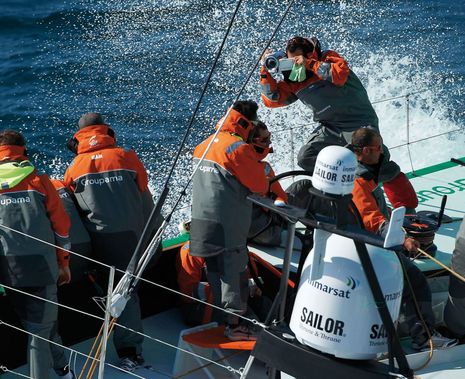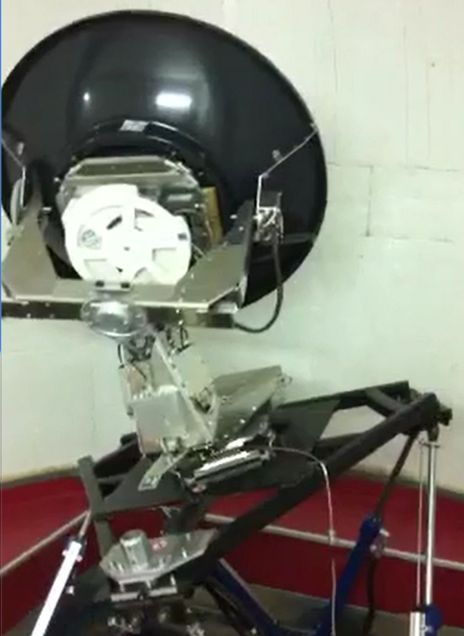Thrane & Thrane, Volvo & VSAT

Tomorrow the Volvo Ocean Race begins its first offshore leg -- Alicante, Spain to Capetown, South Africa -- and Thrane & Thrane is justifiably proud of how it will help the racers keep in touch and also help us follow the action. That's the company's little Inmarsat mini-C dome in the foreground along with its FleetBroadband 150 (also sold as the KVH and Intellian FB150s, I think). The Volvo boats also get Sailor VHF radios-- probably the 6215/6 model which has impressed me in testing you'll hear about soon -- and big FB500 systems especially useful for uploading video. That's one job of "media crew members" (MCMs) like Groupama's Yann Riou shown filming above. To see what this equipment and the crews are about to endure check out these video snippets from the last Volvo. And note that B&G is also proud of its serious Volvo involvement, but I have more Thrane & Thrane news...
In Fort Lauderdale last week I attended a banquet presentation of Thrane & Thrane's new Sailor 900 VSAT antenna. I find it hard to keep up with high end satellite communications because it's complicated and pretty exotic for the boaters I know, but I do gather that Inmarsat is getting some serious competition from VSAT suppliers as their coverage areas get larger and their required antennas smaller and less expensive. The first Sailor-made VSAT is a fairly modest 103 cm dish (40.6-inch), but what I found particularly interesting was the testing regime. Thrane & Thrane put self-contained motion measuring devices on the antenna masts of several ships on passage and then fed the most extreme data into their own multi-axis motion simulator, as seen in the video screen shot below. "It shook the building!" they said.
At any rate, it was a bit odd to watch a lot of sat coms geeks crowding around the unveiled Sailor 700 with drinks in their hands last Friday night, but they did seem to admire the engineering. I'll have more news soon about the measures Inmarsat is taking to protect its sat broadband market, but let me note now that Intellian has apparently solved the Inmarsat service problem for occasional FB users with airtime plans that allow users to stop service by the month at no charge. Information here. Meanwhile, today a reader tipped us to this brand new broadband ViaSat VSAT bird over the US.


 Share
Share
Ben-
Inmarsat is about to embark on Ka Band (20GHz Downlink and 30 GHz uplink)that has the potential to provide significantly lower costs per bit due to available transmit and receive bandwidths for aviation applications.
Does viasat plan to use its Ka Band experience to provide Ka Band commercially any time soon?